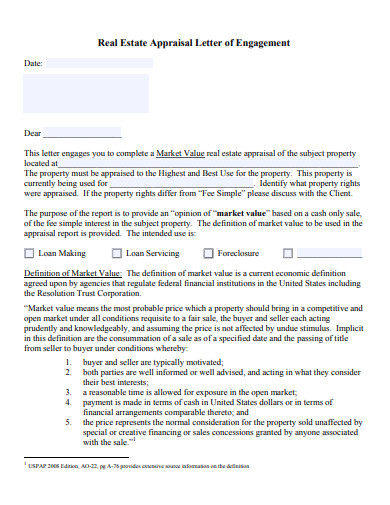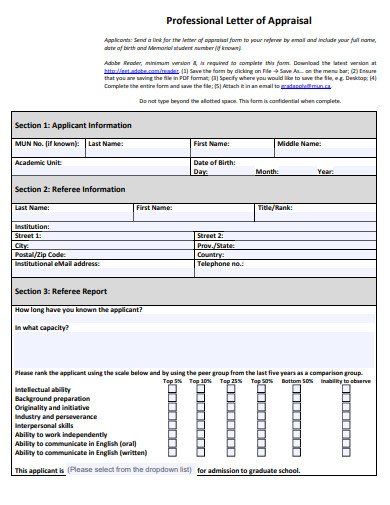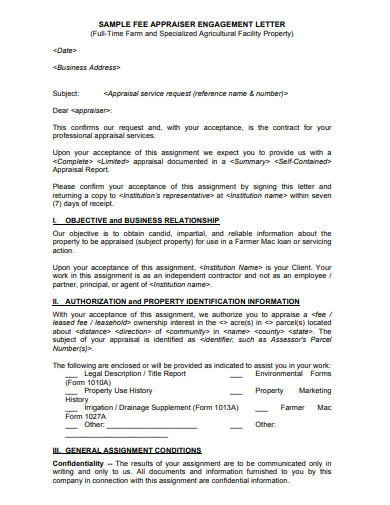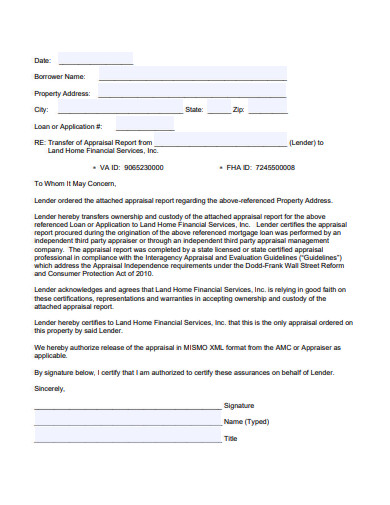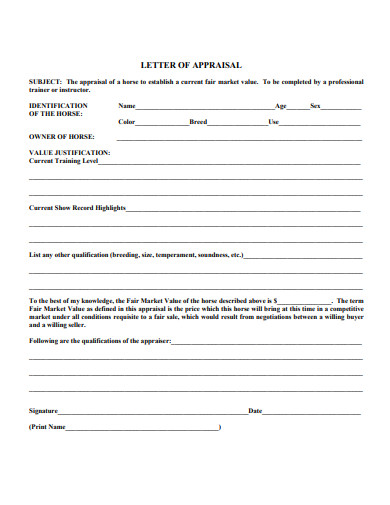10+ Appraisal Letter Examples to Download
Employees with high morale tend to have higher performance scores, positively affecting their organization. The question is, how do you encourage or retain such scores? Maybe salary increments would do, or perhaps an appreciation of their good performance. We’d say to have them both through an appraisal letter! For many, the letter serves as a hint on certain promotions that are awarded by a manager or corporate boss yearly to employees who have good performances. But it is more than that. It could also be a form of recommendation, evaluation, or just a personal thank-you letter, whichever suits your purpose. To have more references, you can take a look at some of our appraisal letter examples and read our proceeding article below.
10+ Appraisal Letter Examples
1. Restaurant Employee Appraisal Letter
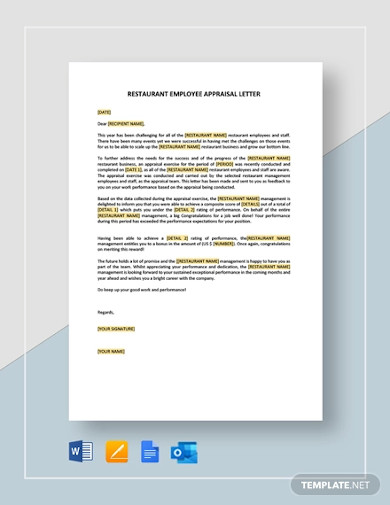
2. Appraisal Letter Sample
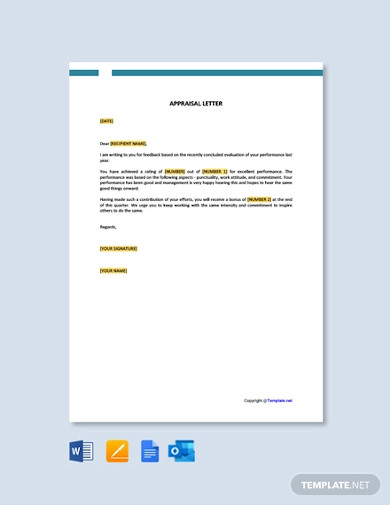
3. Self Appraisal Letter

4. Performance Appraisal Letter
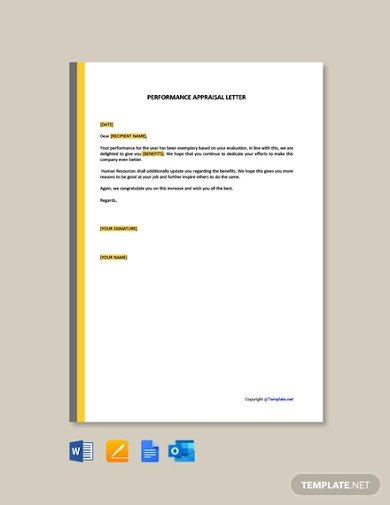
5. Employee Self Appraisal Letter
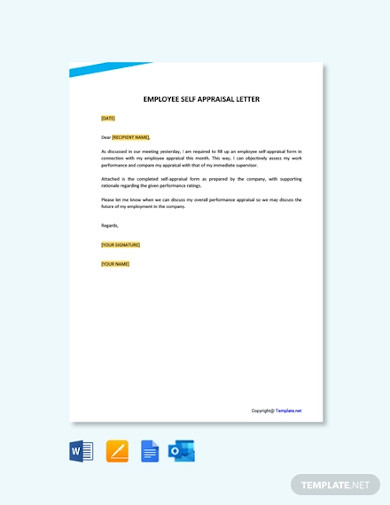
6. Real Estate Appraisal Thank You Letter
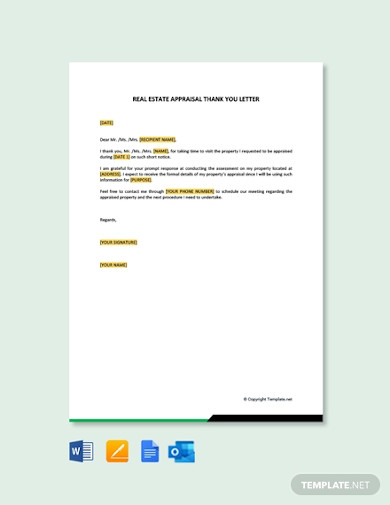
7. Real Estate Appraisal Letter of Engagement
8. Professional Letter of Appraisal
9. Appraisal Engagement Letter
10. Appraisal Transfer Letter
11. Printable Appraisal Letter
What Is an Appraisal Letter?
An appraisal letter is a letter with content that points out the commendation of a specific employee for a job well done. In Wisdom Jobs 2018 article, it was said that such a letter takes into account an employee’s overall compliance like in the attendance policy, performance agreement, corporate goals, and more. According to the same article, annual reports are also a good basis in deciding who to reward the appraisal letter to. And just like other business letters, it is important in many ways. As you read further, you will find out what benefits this type of letter brings.
Benefits of Providing Appraisal Letters
Letters can bring about different emotions, depending on its content. If you talk about business letters, you might think that they are way too technical to be excited about. Well, appraisal letters can prove that wrong. Such letters are highly beneficial, and the following are some of its advantages:
1. It encourages not only the receiver but the entire workforce to do better in their respective scope of work.
2. It makes way for verbal communication and nonverbal communication between executives and their subordinates.
3. It supports the personal development goals of employees through feedback.
4. It smoothens the implementation of business development strategy plans through the healthy relationship between management and operational staff.
How To Write an Appraisal Letter
An appraisal letter is a combination of casual and technical writing. Surely, it won’t be too hard to compose. However, you have to be careful in laying out the messages you want to convey. By most parts, the letter should compliment an employee, but you also have to put a little touch of corporate moves for your business’s sake. Check out our outline below to know what steps you need to take to have a well-written appraisal letter.
1. Commend Recipient
Start your letter by praising the receiver on what he or she had achieved in last year’s operations. This will set up a good mood that invites him or her to continue reading. In doing so, you also emphasized the fact that you are not taking your every employee’s effort for granted.
2. Cite Achieved Goals
Whether short-term goals or long-term goals, your employees have been part of them all. They made an effort and showcased your organization’s competitiveness. It would be very rewarding for them to know that someone from higher management actually recognizes their contributions to the company’s success. Hence, citing the achieved goals must be done.
3. Bring Up Unfulfilled Goals
We all know that a business isn’t all ups. In fact, every step of its way stands various challenges that could bring it and anyone involved in it down. Therefore, you should not try to conceal what goals an employee did not achieve. Bear in mind to choose an appropriate tone in bringing these unfulfilled goals up.
4. Make a Positive Feedback
Always provide employees with brief evaluation feedback. To make it positive, present them their strengths in their accomplished goals, and recommend ways to eliminate their weaknesses in their unachieved goals. If you have time, you can also make an employee SWOT analysis on each of them. Through the feedback, your employees will know what he or she should be working on to do an even better job.
5. Mention Expectations
Don’t forget to mention what you expect from them in the future. Clearly, the feedback that you have given will surely drive them to improve their ways. By mentioning these, you give them time to formulate their very own training plan in a way that is relevant to the set expectations.
6. Check Your Letter’s Accuracy
Grammatical errors and misspelled words may be deemed minor. However, their impact can cause great humiliation for someone who holds a high-ranked corporate title. Thus, you have to take time to reread and edit your appraisal letter’s content. You can save time in doing so using various grammar checkers on the internet.
FAQs:
What are the different types of appraisals?
According to EDUCBA, there are seven types of appraisals. These consist of the 360-Degree Appraisal, General Performance Appraisal, Manager Performance Appraisal, Technological Performance Appraisal, Employee Self-Assessment, Project Evaluation Review, and Sales Performance Appraisal.
What is a bell curve?
Bell curve is an appraisal method where employees are sorted into three groups – top talents, mediocre, and worst performers. In this method, the best employees are further improved while the worst ones are eliminated. The classification is based on the contrasting performance of employees with the same set of activities.
What are the phases of the performance appraisal process?
Phase 1: Set Up Work Standards Phase 2: Presenting Standards and Expectations Phase 3: Scoring Performance Phase 4: Compare To Standards Phase 5: Talking Through the Outcome Phase 6: Final Decision and Corrective Actions
Famous startup investor and advisor Fran Hauser wrote in her book entitled The Myth of the Nice Girl, “When you put yourself in the other person’s shoes, you can see that the person critiquing you is merely trying to help.” Assessments and feedback are necessary for every employee’s healthy mindset about his or her employer. However, people need more than just figures and analogies. They need recognition and encouragement to motivate them to continue in their chosen career paths. As the person-in-charge of the workforce, you should make time to provide those necessities. And, an appraisal letter is a perfect tool for you to do so.



